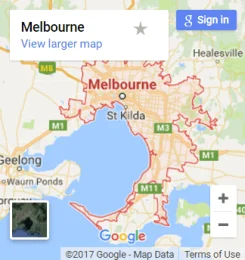Many homeowners are inclined to ask about the kind of cleaning solutions and implements to use for the modern flooring tiles installed in their house. In most cases, porcelain tiles are the most preferred floor type because of their appeal, durability, low cost, wide range of styles, and ease of cleaning. It may delight homeowners to know that some of the cleaning products, which are generally applicable with porcelain floor tiles, can be found at home with Total Floor sanding and polishing Melbourne.
1. Microfiber Cloths or Pads – Housewives are not likely to complain about lint when using these soft cleaning cloths designed as dirt and debris magnet. Even during rough scrubbing, there is no possibility of scratching the modern flooring tiles. The pads are densely packed with fibers long enough to dig into deep grout lines to reach the build-up of dirt buried in between them. Although not usually necessary, it is safe to use the microfiber cloths with cleaning chemicals. The cloths or pads can be used dry or soaked with water to wipe clean the tiles. The quality and durability of the product largely depend on the manufacturer or supplier.
2. Dish Soap – Dish soap is an ideal cleaner for flooring tiles particularly porcelain. It contains many mild ingredients and some amount of degreaser meant to clean delicate dinnerware without scratching them. A few drops of dish soap in a bucket of warm water can be adequate to clean an entire area of porcelain tiles with the use of either a sponge or cleaning mop. Unlike wood, porcelain is waterproof; thus, the possibility of warping is almost zero. Use regular tap water to remove all traces of soap residue then wipe clean the tiles with dry soft cloth.
3. White Vinegar – Probably the kitchen ingredient with many uses, white vinegar can also serve as an effective cleaning agent, disinfectant, degreaser, and odor remover. Its acid content is strong enough to kill germs and penetrate through layers of dirt and grease yet remaining gentle to the tiles and human hands. To tone down the acidity, dilute pure vinegar with water in equal amount. Pour in a spray bottle for easy application when cleaning the tiles. A few spray of the solution melts away the grime and dirt sticking on the floor surface. The mild acidic scent lingers for a while but may be gone within an hour.
4. Rubbing Alcohol – Another great disinfectant, rubbing alcohol is also a useful cleaning solution for removing stains, grease, and dirt without damaging the tile surface. However, when used in large quantities, it can result to slippery tiles especially when mixed with water. Generally, it is ideal for spot cleaning small areas. It can be easily poured on crevices or grouts to reach deeply. Rubbing alcohol kills germs on contact. Use a soft rag, applying gentle motions to scrub clean and wipe the dirty area.
5. Ammonia – You could mix ammonia and water in a basin or pail and sponge the solution on your tiles. The mixture can effectively rid your bathroom tiles of mildew, which normally occurs because of the moisture that collects in your bathroom after every bath or shower you take. However, if you plan to use ammonia, make sure you use a mask to cover your face and protective gloves for your hands. Moreover, never mix ammonia with bleach, as this solution causes toxic fumes.
Some Cleaning Methods for Old and Modern Floor Tiles
The cleaning treatment for different types of floors varies. Some floor surfaces demand the use of heavy-duty equipment to keep them in good condition while others may only require simple procedures and mild cleaning solutions. It is important to dry the floor completely after each cleaning or mopping routine for everyone’s safety. On the other hand, if you were cleaning bathroom tiles, it would be a good idea to do a little steam cleaning first before tackling the tiles head-on. You can do this by turning the shower on hot for about five minutes. This would loosen any dirt that has accumulated on the tiles, making it easier for you to scrub the dirt buildup in the grout between the tiles.
In the past, the use of sawdust is deemed effective in absorbing liquids seeping through the floor. Instead of preventing the spillage, sawdust is swept up as they become wet and replaced every day. Also, it used to be common to spread tealeaves to collect the dirt that gathered on carpets and to remove the foul odor. The method is still practiced in some parts of the world, as well as the use of diatomaceous earth or cat litter to remove insect and bug infestation from floor surfaces.
Today, cleaning modern flooring tiles and other surfaces employ a wide range of cleaning machines from vacuum cleaners to floor buffers to automatic scrubbers and to carpet extractors. All these and more are designed to perform different cleaning functions on almost any type of flooring materials, whether tiles, wood, or carpet, in much lesser time and more convenient way than the manual cleaning method. Nevertheless, we offer tile and grout cleaning for Melbourne homeowners, shops, and offices; thus, you may simply call us for help if you think you don’t have it in you to tackle the task yourself.

